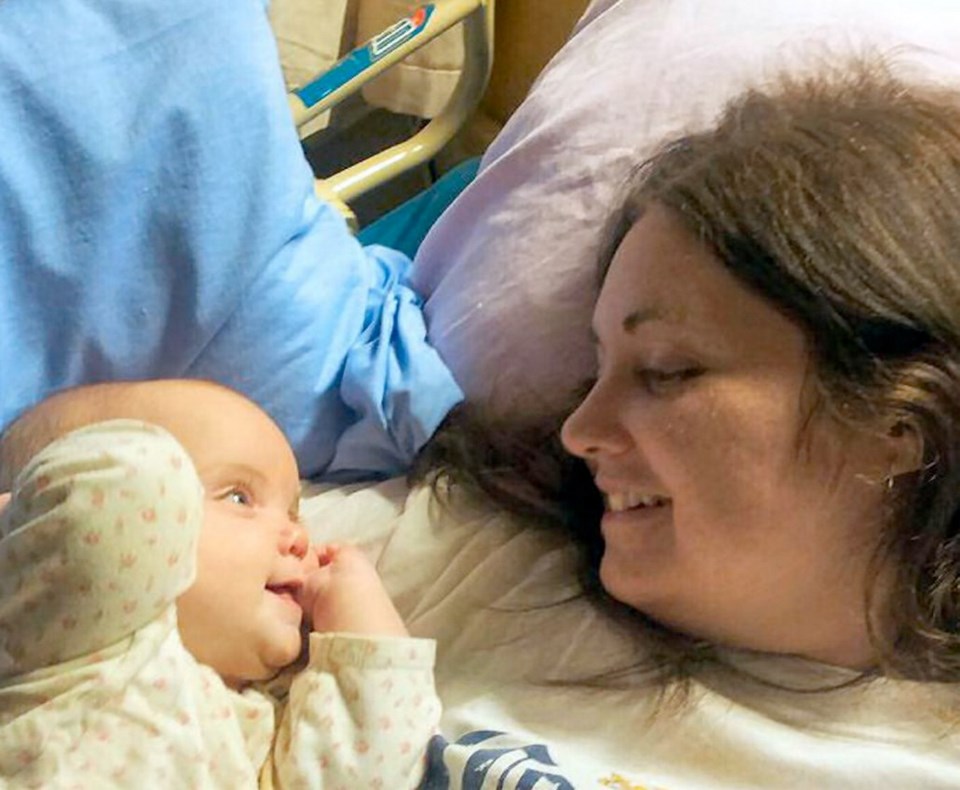The family of a young Saanich mother who died last month in the aftermath of widespread blood clots is making a critical contribution to genetic research that may some day help others.
Karen Roberts died at 32 on July 28, after suffering what’s called a thrombotic storm — blood clotting throughout her body that was so severe, a blood sample drawn in Victoria General Hospital shortly before she died turned nearly solid, despite receiving anti-clotting drugs, said Roberts’ sister, Gillian Croft. Roberts’ foot had turned black, and even though surgeons removed a clot in her arm, it stayed black.
Croft has also suffered from multiple clots. When she was 19, one of her legs turned blue as a result of multiple clots. “I’ve had three episodes of clotting now. My third, I was already on Heparin, an anti-clotting drug,” she said.
The family is the only one known in the world to have more than one person with Thrombotic Storm Disorder, said Dr. Jeffery M. Vance, a director of the Hussman Institute for Human Genomics at the University of Miami Medical School. “It usually doesn’t have a family history. It’s usually a single individual.”
Vance, a neurologist and geneticist, and his wife, Margaret Pericak-Vance, a professor of human genomics, have devoted the last four years to studying the rare disease, which claimed their 14-year-son in 1998.
They know of only 42 cases of people who’ve similarly suffered multiple clots, and whose DNA was gleaned through other doctors attending medical conventions and has now been sequenced.
Their hypothesis is that a rare and severe genetic change occurs in some people’s DNA that leads to thrombotic storms after a trigger, such as an infection. “You’re asking for two rare events to occur,” said Pericak-Vance — the genetic susceptibly and the inflammatory trigger. Roberts’ health was compromised by the fact that she also suffered from bleeding ulcerative colitis and suffered an infection in July that put her in hospital, where she began to clot. She died after four days.
The family’s DNA is part of the Hussman research because representatives from Florida came to VGH in April 2012, when Roberts suffered a stroke on her 31st birthday. “She let them take vials and vials of her blood — she was just so brave and always thinking of others,” Croft said. Samples were also collected from Roberts’ parents, husband, daughter Brooklynn, now 17 months old, and Croft’s family.
“We’ve definitely made progress,” Vance said. The hope is that in 10 to 20 years, genetic profiling will reveal who is susceptible to the disorder, so those patients can take preventive measures. One such measure might be not taking birth-control pills, which are linked to stroke. Thrombotic storms are the extreme manifestation of common problem, Vance said. “Hopefully if we can figure out something about that, we’ll be able to figure out something for the less extreme cases, and help them, because it’s a big problem.”
Although up to 80 per cent of people survive thrombotic storms, many are incapacitated.
Croft believes her own daughter, now 16, also suffered clotting during open-heart surgery at nine months. The girl is now deaf, blind and unable to walk.
Roberts’ family has no other known clotting disorders that show up on tests, meaning the disorder can strike out of the blue, given there is no way to know who has the gene and who does not, Croft said.
Roberts underwent many tests for clotting disorders when she became pregnant, but tested negative, as did Croft.
“Everything about Karen was super rare,” said her husband, Glen Bartlett.
In the last year of her life, Roberts suffered 10 compression fractures of her spine due to the drug Prednisone, needed to fight her colitis. She spent eight months of Brooklynn’s first year in and out of hospital. At home, she needed a back brace and could barely move.
“She wanted to be a mom for a very, very long time,” Bartlett said. “It pained her that she had to watch her baby and not participate in her care.”
Medical personnel who want to contact the Hussman Institute can call toll-free at 877-686-6444.



